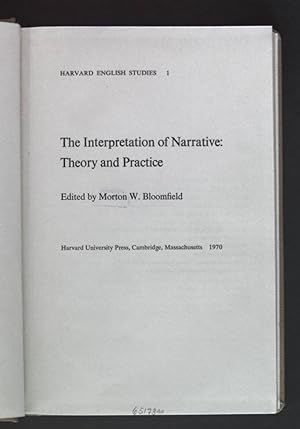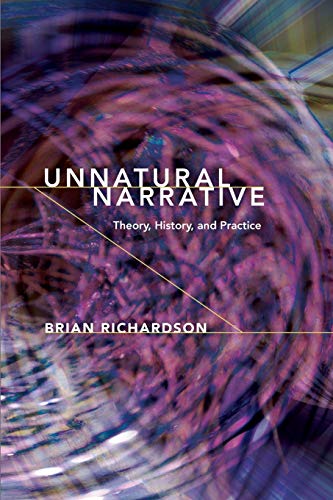interpretation narrative theory practice (4 Ergebnisse)
Suchfilter
Produktart
- Alle Product Types
- Bücher (4)
- Magazine & Zeitschriften (Keine weiteren Ergebnisse entsprechen dieser Verfeinerung)
- Comics (Keine weiteren Ergebnisse entsprechen dieser Verfeinerung)
- Noten (Keine weiteren Ergebnisse entsprechen dieser Verfeinerung)
- Kunst, Grafik & Poster (Keine weiteren Ergebnisse entsprechen dieser Verfeinerung)
- Fotografien (Keine weiteren Ergebnisse entsprechen dieser Verfeinerung)
- Karten (Keine weiteren Ergebnisse entsprechen dieser Verfeinerung)
- Manuskripte & Papierantiquitäten (Keine weiteren Ergebnisse entsprechen dieser Verfeinerung)
Zustand Mehr dazu
- Neu (1)
- Wie Neu, Sehr Gut oder Gut Bis Sehr Gut (1)
- Gut oder Befriedigend (1)
- Ausreichend oder Schlecht (1)
- Wie beschrieben (Keine weiteren Ergebnisse entsprechen dieser Verfeinerung)
Einband
Weitere Eigenschaften
- Erstausgabe (Keine weiteren Ergebnisse entsprechen dieser Verfeinerung)
- Signiert (Keine weiteren Ergebnisse entsprechen dieser Verfeinerung)
- Schutzumschlag (Keine weiteren Ergebnisse entsprechen dieser Verfeinerung)
- Angebotsfoto (2)
Sprache (1)
Preis
- Beliebiger Preis
- Weniger als EUR 20
- EUR 20 bis EUR 45
- Mehr als EUR 45 (Keine weiteren Ergebnisse entsprechen dieser Verfeinerung)
Gratisversand
- Kostenloser Versand nach USA (Keine weiteren Ergebnisse entsprechen dieser Verfeinerung)
Land des Verkäufers
Verkäuferbewertung
-
The Interpretation of Narrative: Theory and Practice. Harvard English Studies 1
Verlag: Harvard University Press, 1970
Sprache: Englisch
Anbieter: books4less (Versandantiquariat Petra Gros GmbH & Co. KG), Welling, Deutschland
EUR 4,95
Währung umrechnenEUR 12,95 für den Versand von Deutschland nach USAAnzahl: 1 verfügbar
In den Warenkorbgebundene Ausgabe. Zustand: Gut. 287 Seiten; Der Erhaltungszustand des hier angebotenen Werks ist trotz seiner Bibliotheksnutzung sehr sauber. Es befindet sich neben dem Rückenschild lediglich ein Bibliotheksstempel im Buch; ordnungsgemäß entwidmet. In ENGLISCHER Sprache. Sprache: Englisch Gewicht in Gramm: 520.
-
Harvard English Studies: The Interpretation of Narrative: Theory and Practice (Volume 1)
Anbieter: Anybook.com, Lincoln, Vereinigtes Königreich
EUR 34,21
Währung umrechnenEUR 14,92 für den Versand von Vereinigtes Königreich nach USAAnzahl: 1 verfügbar
In den WarenkorbZustand: Poor. Volume 1. This is an ex-library book and may have the usual library/used-book markings inside.This book has hardback covers. Book contains pen & pencil markings. In poor condition, suitable as a reading copy. Re-bound by library. Please note the Image in this listing is a stock photo and may not match the covers of the actual item,550grams, ISBN:0674375211.
-
Unnatural Narrative: Theory, History, and Practice (Theory and Interpretation of Narrative)
Verlag: Ohio State University Press, 2015
ISBN 10: 0814252095 ISBN 13: 9780814252093
Sprache: Englisch
Anbieter: Ria Christie Collections, Uxbridge, Vereinigtes Königreich
EUR 44,93
Währung umrechnenEUR 13,81 für den Versand von Vereinigtes Königreich nach USAAnzahl: Mehr als 20 verfügbar
In den WarenkorbZustand: New. In.
-
Introduction to Literary Interpretation. From Theory to Practice: Narrative Strategies, Discourse Presentation and Tropes
Anbieter: AHA-BUCH GmbH, Einbeck, Deutschland
EUR 18,07
Währung umrechnenEUR 65,00 für den Versand von Deutschland nach USAAnzahl: 1 verfügbar
In den WarenkorbTaschenbuch. Zustand: Sehr gut. Gebraucht - Sehr gut sg - ungelesenes mängelexemplar mit leichten lagerspuren - Appropriate for introductory analysis of literary texts, the volume is conceived both as a critical work and a workbook for literary classes. Structured in four sections, the book combines theory with practice by providing a thorough analytical framework for a rich collection of literary terms. The first three chapters investigate narrative strategies (narration, description, dialogue, monologue or evocation), speech and thought presentation categories (from direct speech or indirect thought to internal narration) as well as selection of tropes (personification, metaphor, metonymy, simile, irony etc.) by offering a theoretical background and explanatory comments for a wide range of texts. The last section is particularly useful for in-depth interpretation of a variety of texts proposed for further study with specific tasks assigned in order to actively engage readers in the process of creative literary exploration.





